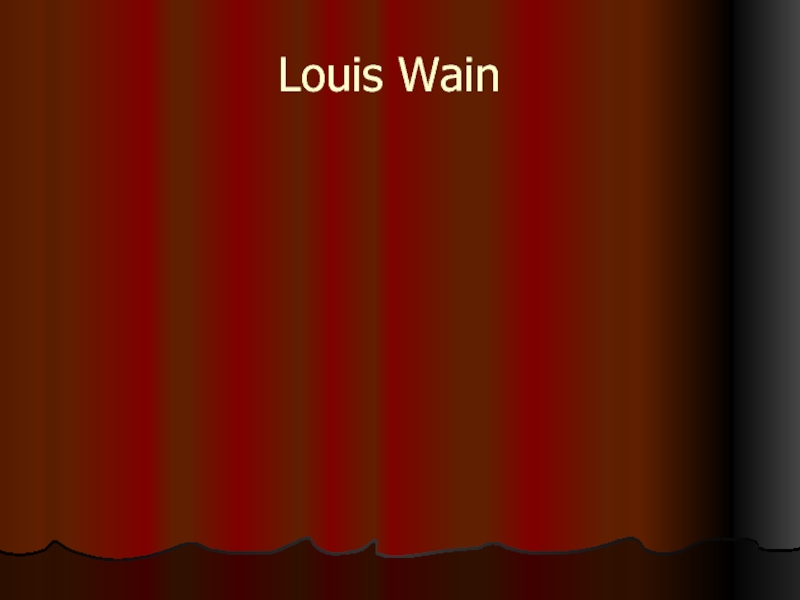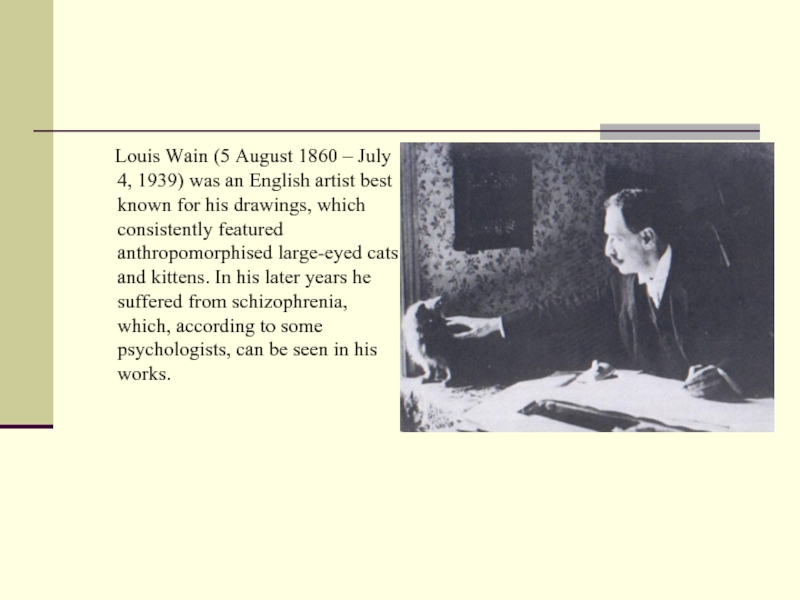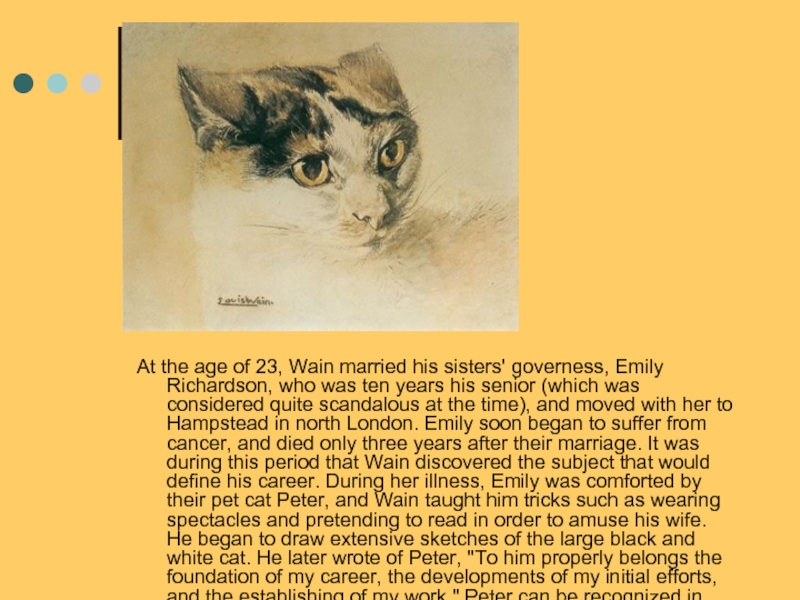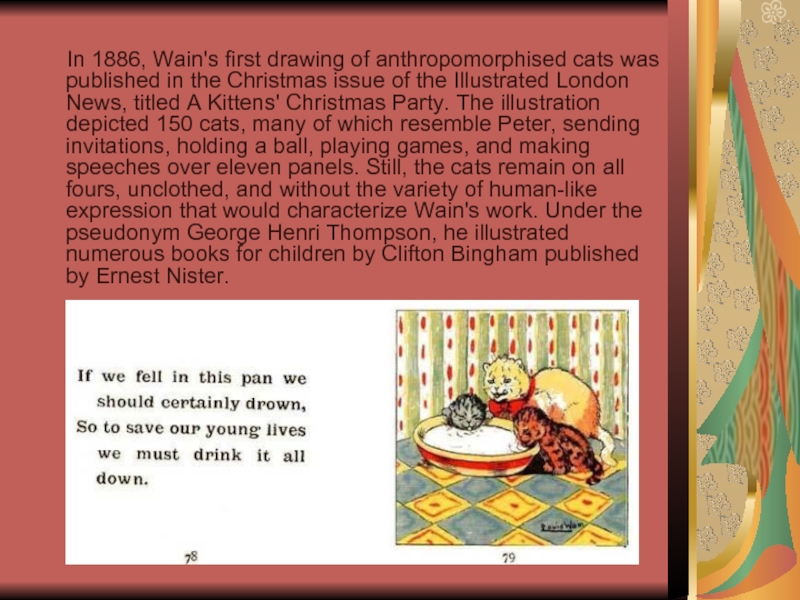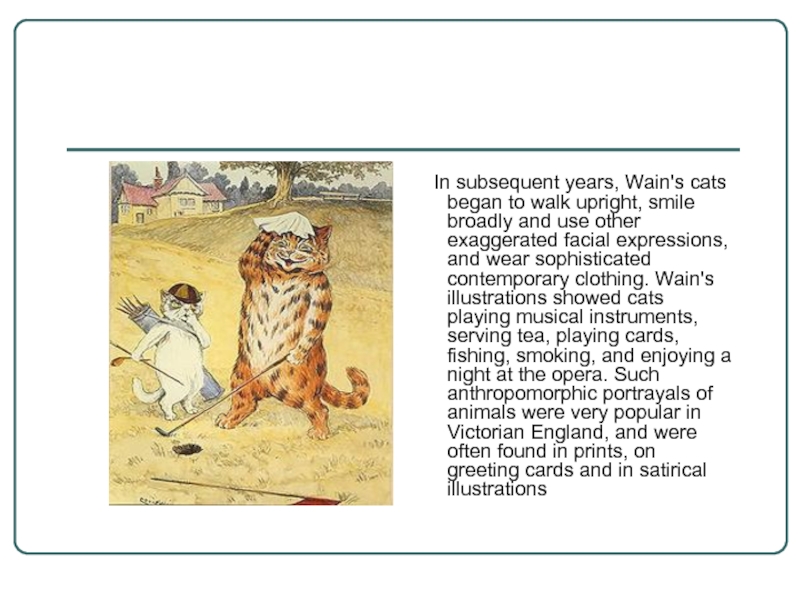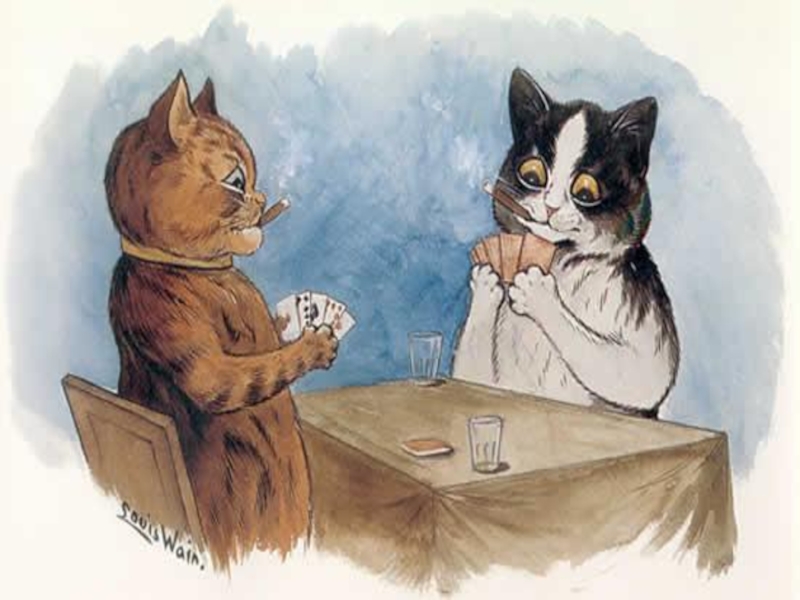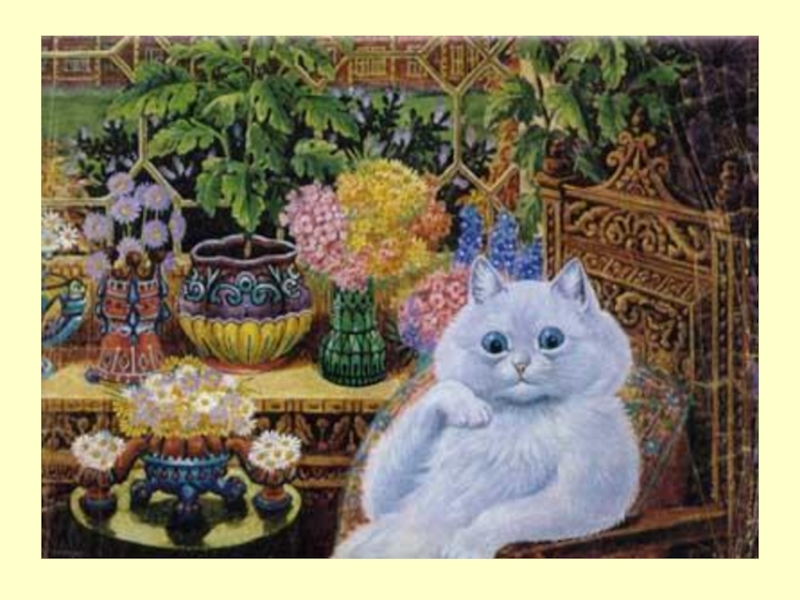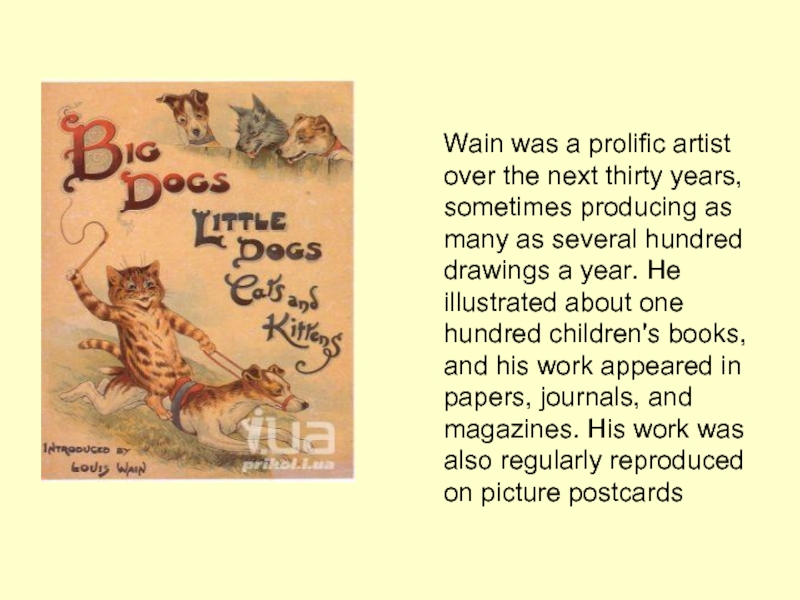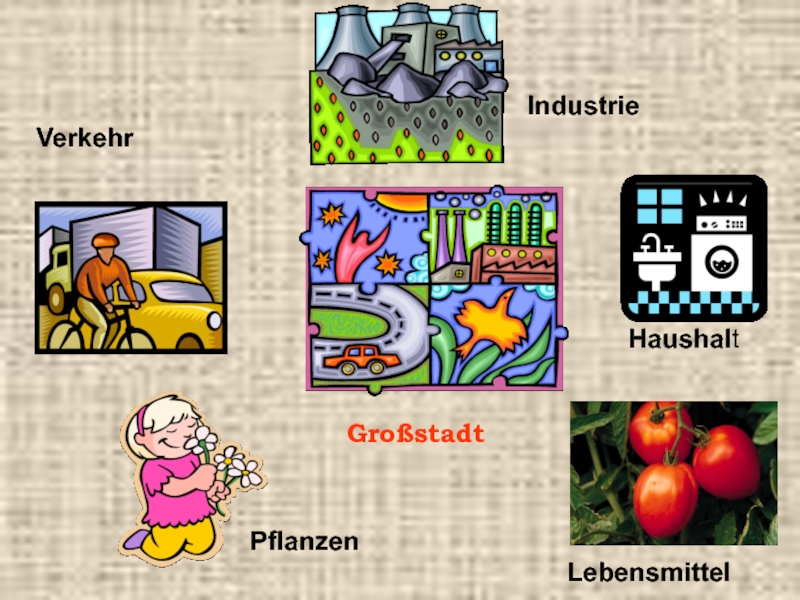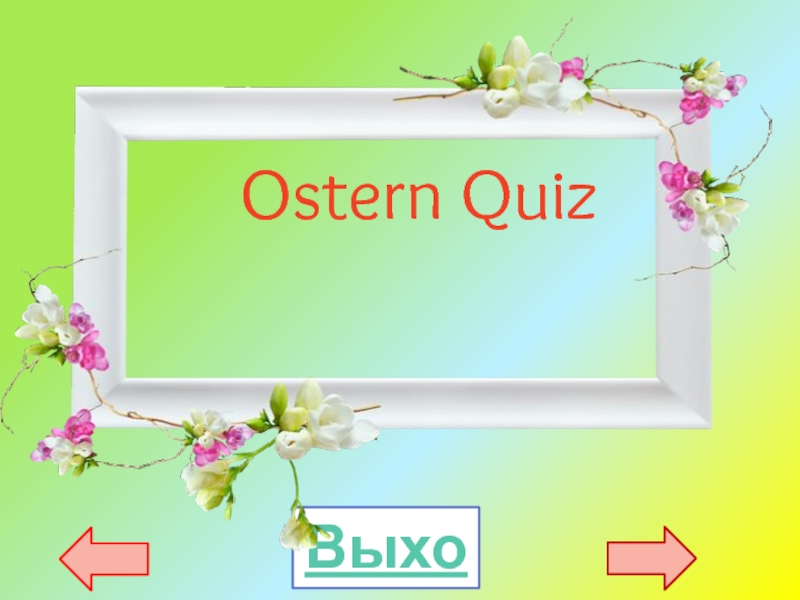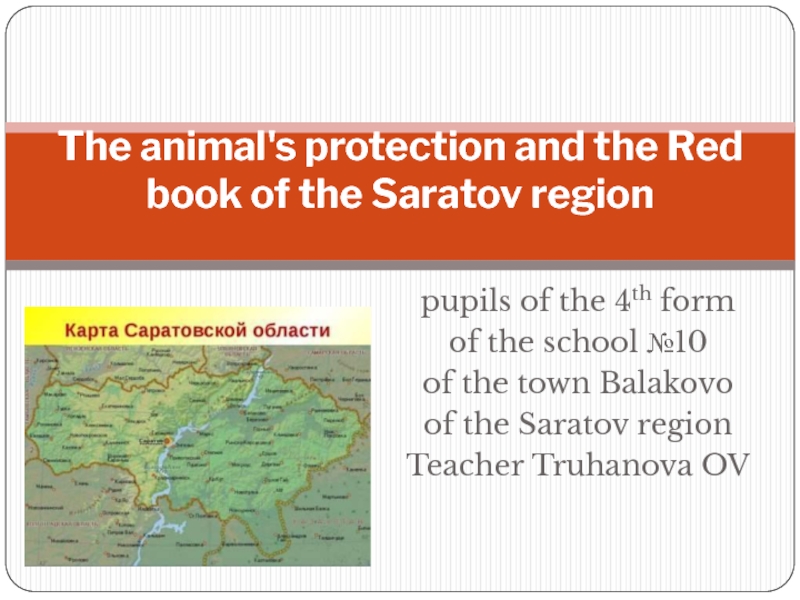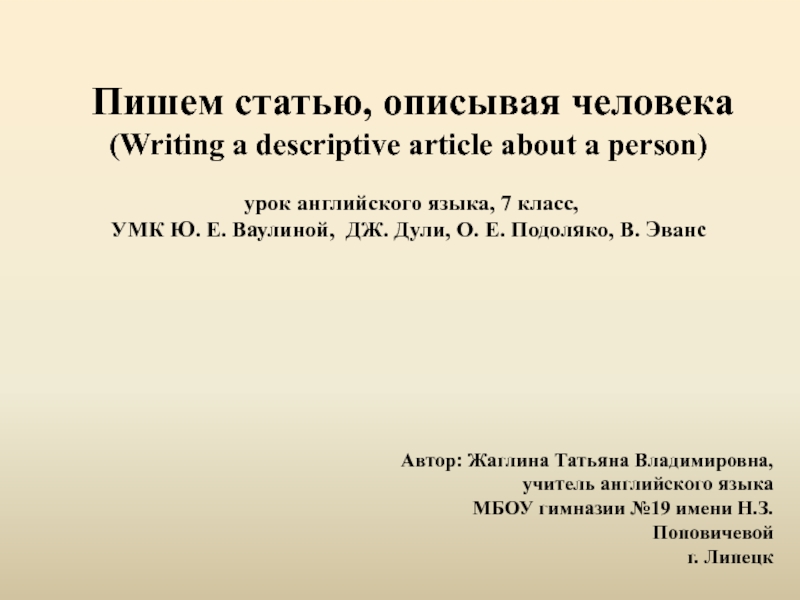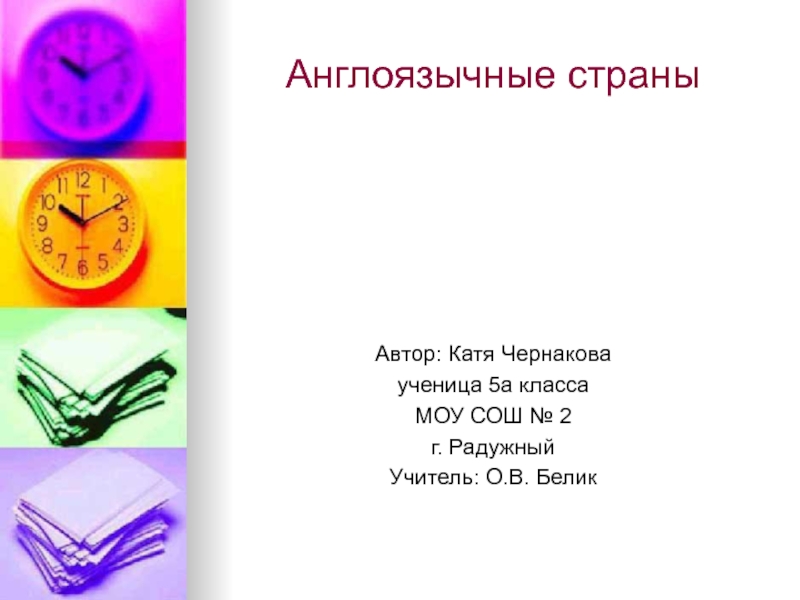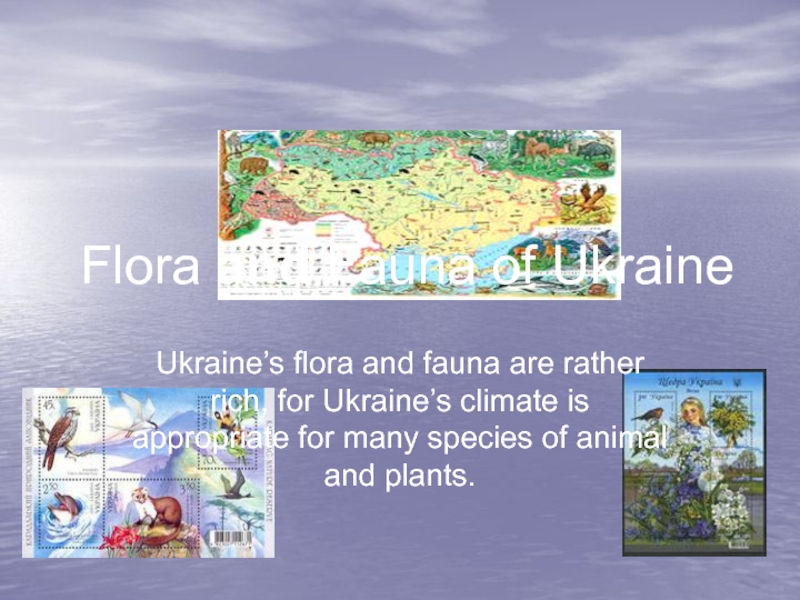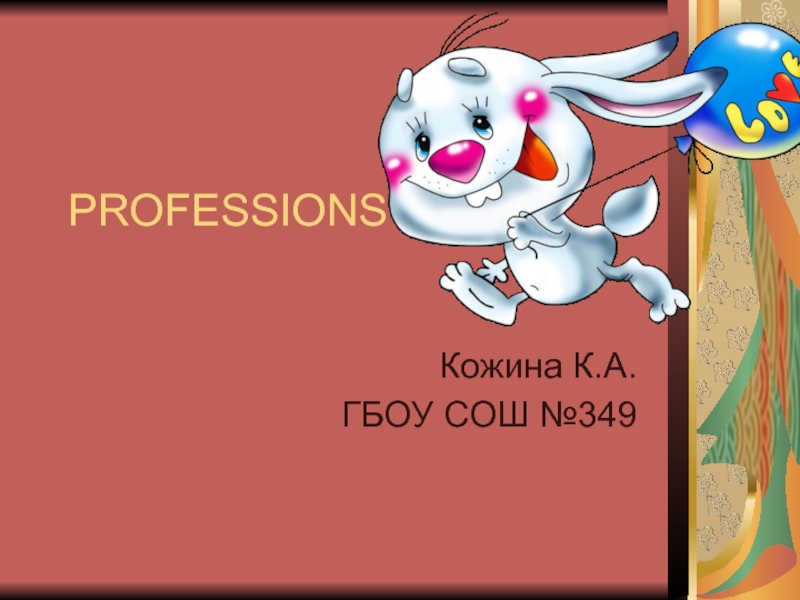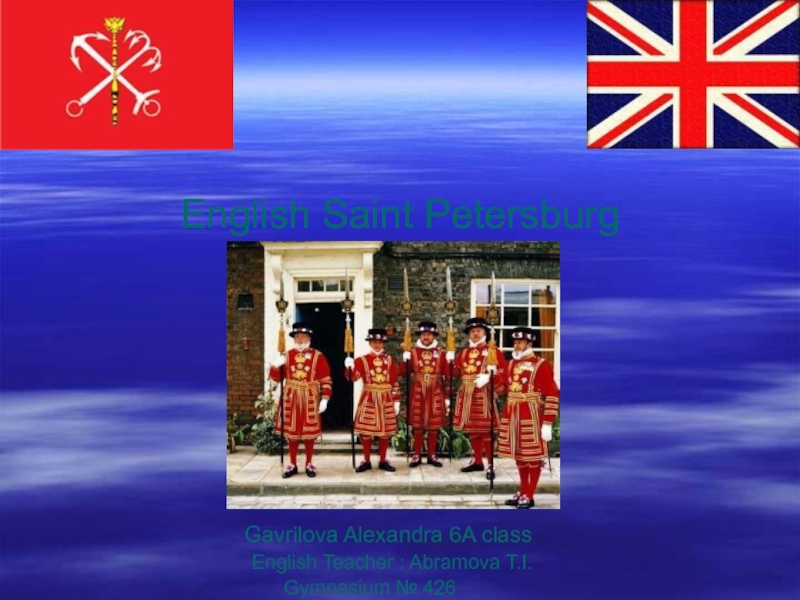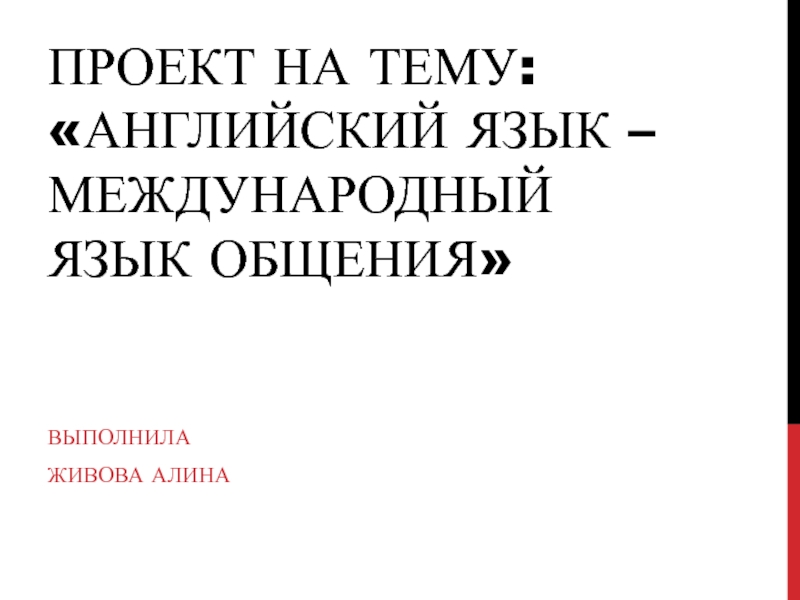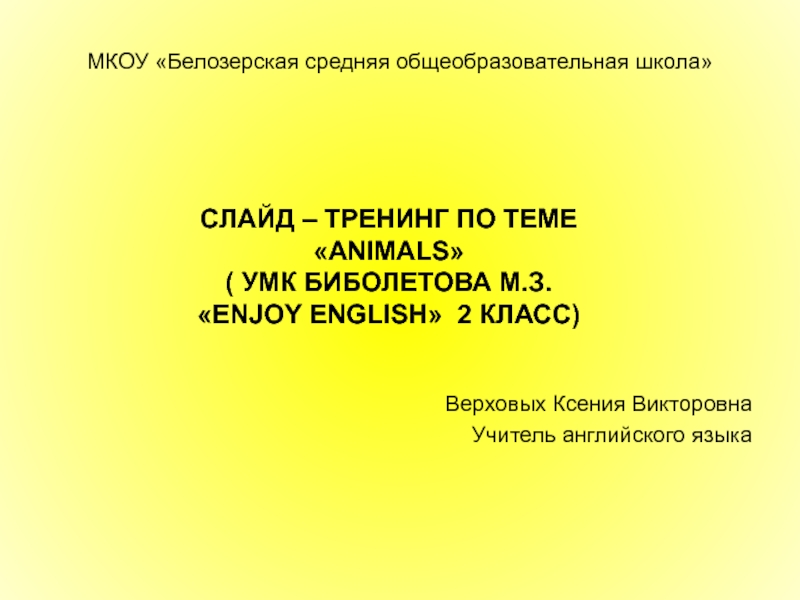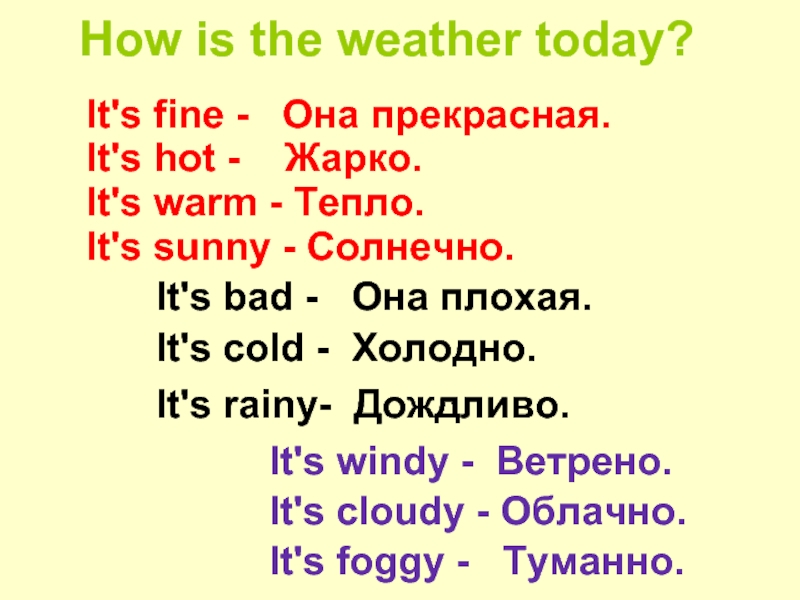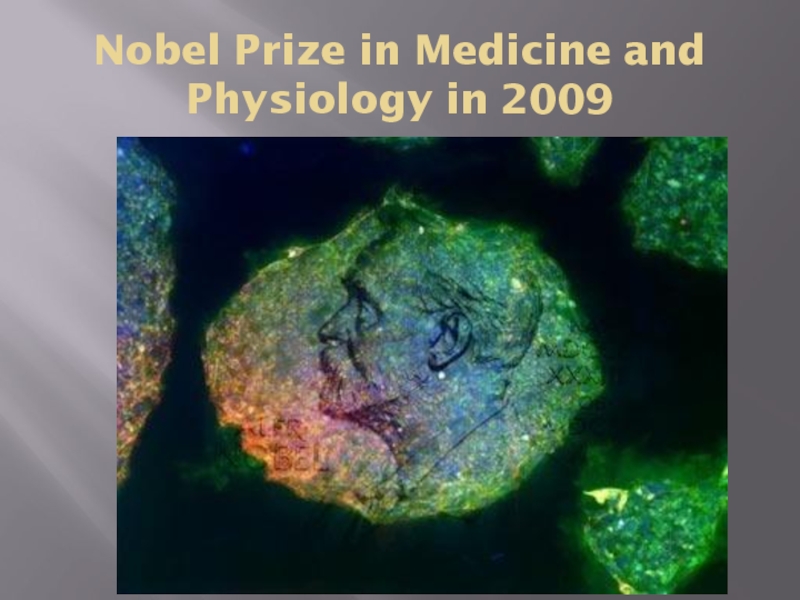Разделы презентаций
- Разное
- Английский язык
- Астрономия
- Алгебра
- Биология
- География
- Геометрия
- Детские презентации
- Информатика
- История
- Литература
- Математика
- Медицина
- Менеджмент
- Музыка
- МХК
- Немецкий язык
- ОБЖ
- Обществознание
- Окружающий мир
- Педагогика
- Русский язык
- Технология
- Физика
- Философия
- Химия
- Шаблоны, картинки для презентаций
- Экология
- Экономика
- Юриспруденция
Louis Wain
Содержание
- 1. Louis Wain
- 2. Louis Wain (5
- 3. Life and workLouis William Wain was born
- 4. Louis studied at the West London
- 5. Wain soon quit his teaching
- 6. At the age of 23, Wain married
- 7. In 1886, Wain's first
- 8. In subsequent years, Wain's cats
- 9. Слайд 9
- 10. Слайд 10
- 11. Слайд 11
- 12. Слайд 12
- 13. Слайд 13
- 14. Wain was a prolific artist
- 15. Wain's illustrations often parody human
- 16. Despite his popularity, Wain suffered financial difficulty
- 17. From this point,
- 18. When his sisters could no
- 19. Слайд 19
- 20. Скачать презентанцию
Louis Wain (5 August 1860 – July 4, 1939) was an English artist best known for his drawings, which consistently featured anthropomorphised large-eyed cats and kittens. In
Слайды и текст этой презентации
Слайд 3Life and work
Louis William Wain was born on August 5,
1860 in Clerkenwell in London. His father was a textile
trader and embroiderer; his mother was French. He was the first of six children, and the only male child. None of his five sisters ever married. At the age of thirty, his youngest sister was certified as insane, and admitted to an asylum. The remaining sisters lived with their mother for the duration of their lifetimes, as did Louis for the majority of his life.Слайд 4 Louis studied at the West London School of Art
and eventually became a teacher there for a short period.
At the age of 20, Wain was left to support his mother and sisters after his father's death.Слайд 5 Wain soon quit his teaching position to become
a freelance artist, and in this role he achieved substantial
success. He specialized in drawing animals and country scenes, and worked for several journals including the Illustrated Sporting and Dramatic News, where he stayed for four yearsСлайд 6At the age of 23, Wain married his sisters' governess,
Emily Richardson, who was ten years his senior (which was
considered quite scandalous at the time), and moved with her to Hampstead in north London. Emily soon began to suffer from cancer, and died only three years after their marriage. It was during this period that Wain discovered the subject that would define his career. During her illness, Emily was comforted by their pet cat Peter, and Wain taught him tricks such as wearing spectacles and pretending to read in order to amuse his wife. He began to draw extensive sketches of the large black and white cat. He later wrote of Peter, "To him properly belongs the foundation of my career, the developments of my initial efforts, and the establishing of my work." Peter can be recognized in many of Wain's early published works.Слайд 7 In 1886, Wain's first drawing of anthropomorphised
cats was published in the Christmas issue of the Illustrated
London News, titled A Kittens' Christmas Party. The illustration depicted 150 cats, many of which resemble Peter, sending invitations, holding a ball, playing games, and making speeches over eleven panels. Still, the cats remain on all fours, unclothed, and without the variety of human-like expression that would characterize Wain's work. Under the pseudonym George Henri Thompson, he illustrated numerous books for children by Clifton Bingham published by Ernest Nister.Слайд 8 In subsequent years, Wain's cats began to walk
upright, smile broadly and use other exaggerated facial expressions, and
wear sophisticated contemporary clothing. Wain's illustrations showed cats playing musical instruments, serving tea, playing cards, fishing, smoking, and enjoying a night at the opera. Such anthropomorphic portrayals of animals were very popular in Victorian England, and were often found in prints, on greeting cards and in satirical illustrationsСлайд 14 Wain was a prolific artist over the next
thirty years, sometimes producing as many as several hundred drawings
a year. He illustrated about one hundred children's books, and his work appeared in papers, journals, and magazines. His work was also regularly reproduced on picture postcardsСлайд 15 Wain's illustrations often parody human behavior, satirizing fads
and fashions of the day. He wrote, "I take a
sketch-book to a restaurant, or other public place, and draw the people in their different positions as cats, getting as near to their human characteristics as possible. This gives me doubly nature, and these studies I think [to be] my best humorous work."Слайд 16Despite his popularity, Wain suffered financial difficulty throughout his life.
He remained responsible for supporting his mother and sisters, and
had little business sense. Wain was modest and easily exploited, ill-equipped for bargaining in the world of publishing. He often sold his drawings outright, retaining no rights over their reproduction. He was easily misled, and occasionally found himself duped by the promise of a new invention or other money-making scheme.He travelled to New York in 1907, where he drew some comic strips, such as Cats About Town and Grimalkin, for Hearst newspapers. His work was widely admired, although his critical attitude toward the city made him the subject of sniping in the press. He returned home with even less money than before due to imprudent investment in a new type of oil lamp.
